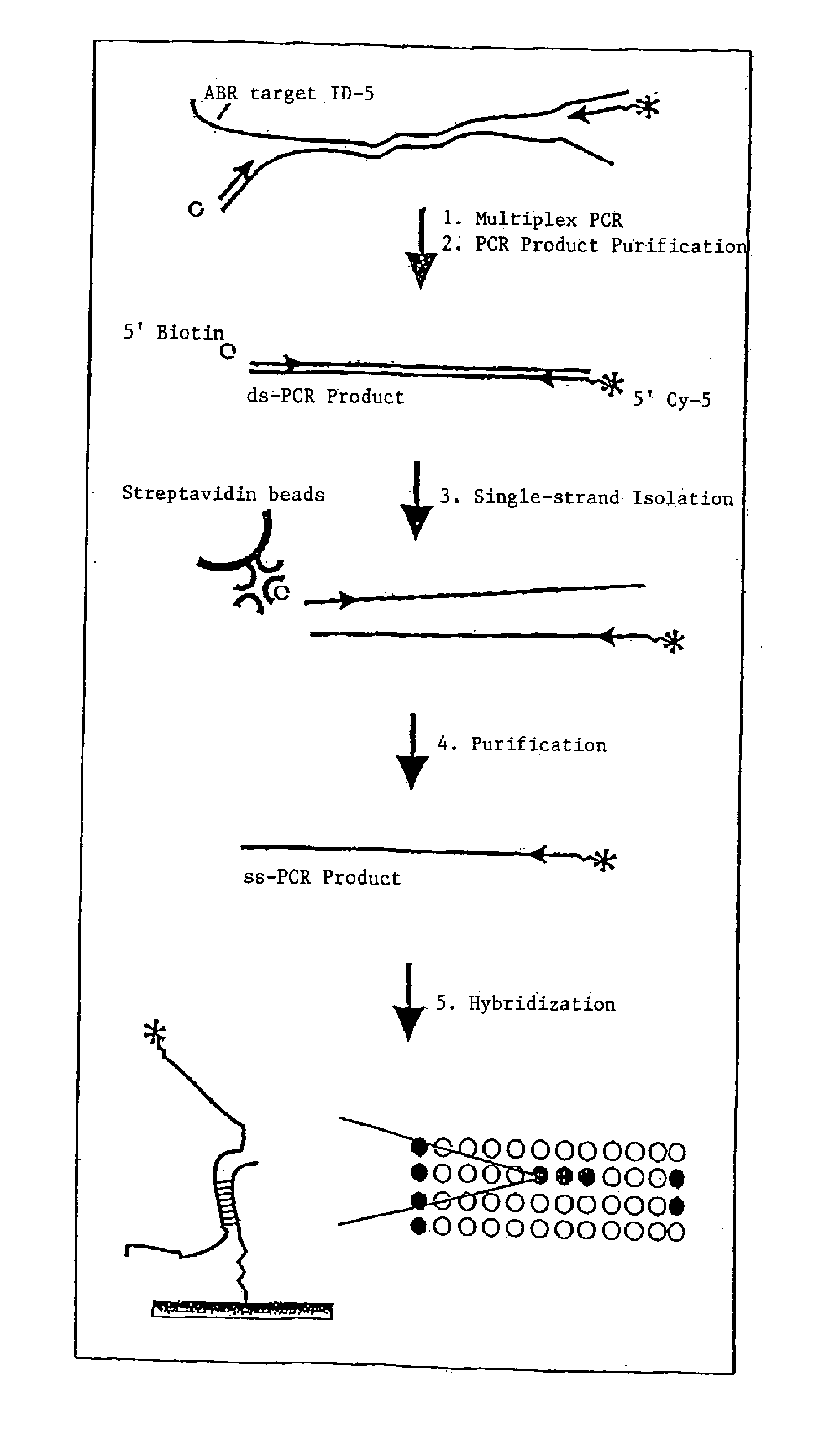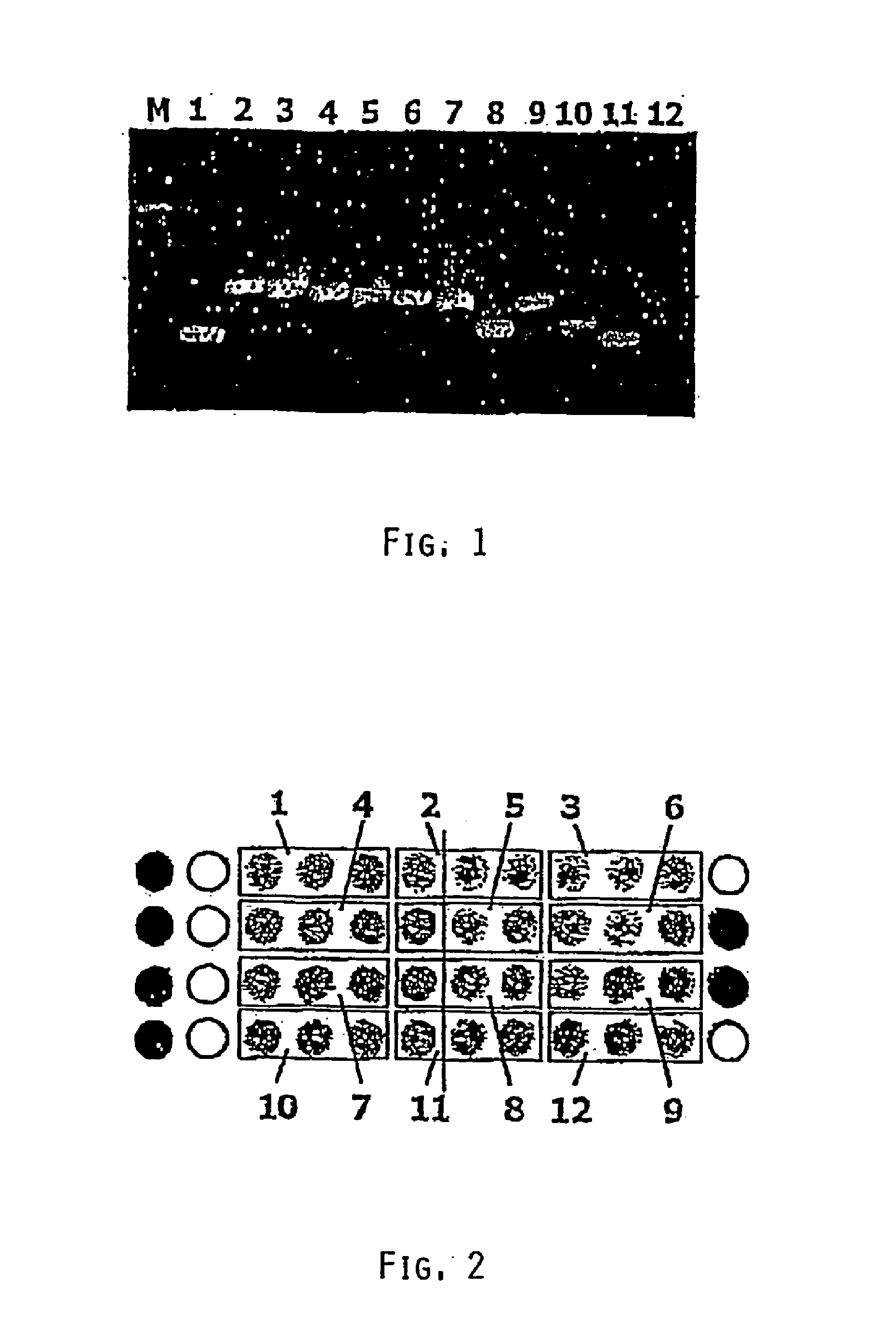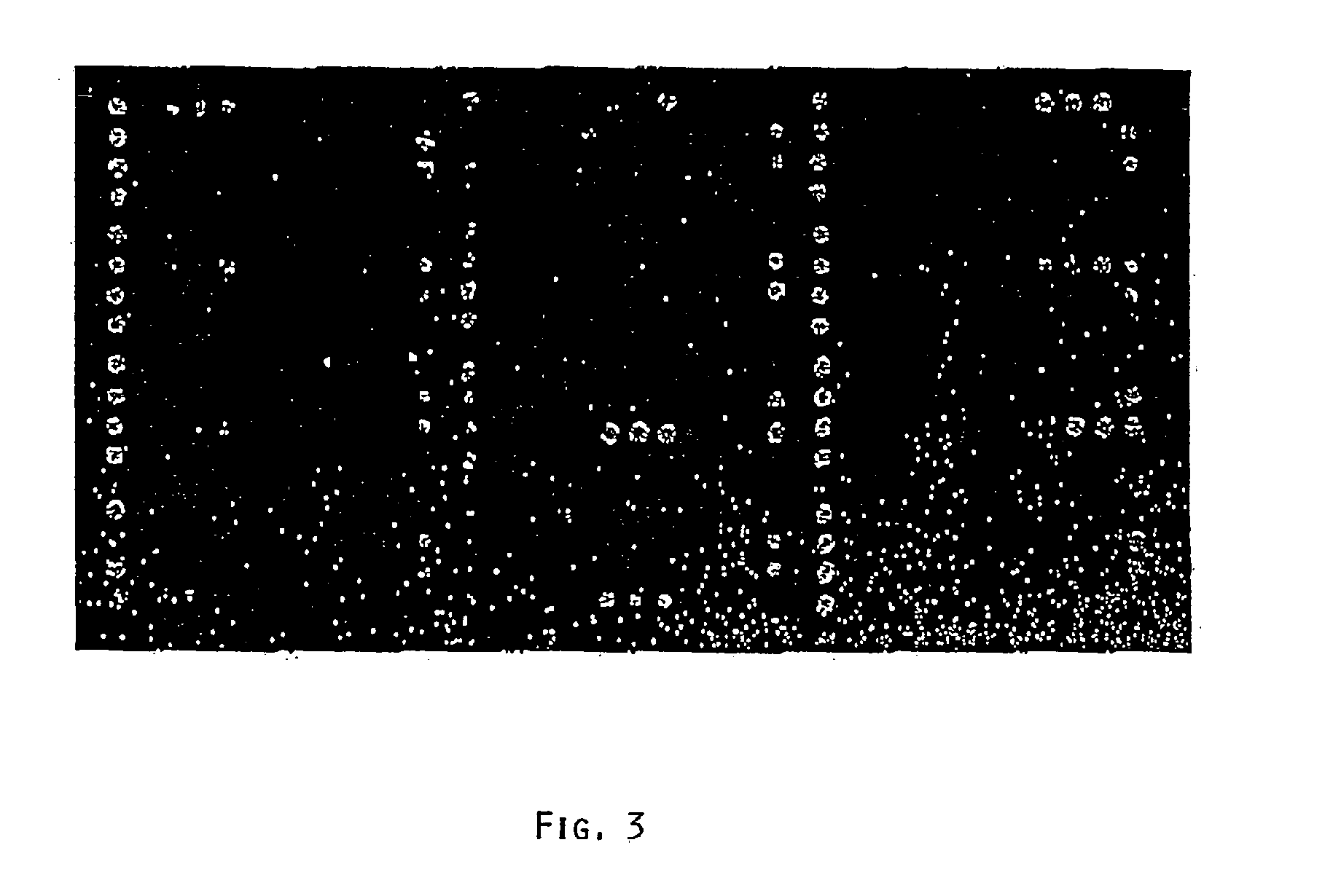Methods and Compositions For Detecting Nucleic Acid Molecules
a nucleic acid and composition technology, applied in combinational chemistry, biochemistry apparatus, chemical libraries, etc., can solve the problems of the specificity and the maximum number of nucleic acid molecules that are simultaneously detectable, and the inability to carry out methods for the detection of several or a large number of nucleic acid molecules. , to achieve the effect of cost-effectiveness and low work
- Summary
- Abstract
- Description
- Claims
- Application Information
AI Technical Summary
Benefits of technology
Problems solved by technology
Method used
Image
Examples
examples
1. Gene Synthesis of Reference “ABR Targets”
[0060]A series of antibiotic resistance (ABR) sequences was prepared by gene synthesis in vitro, since either “type strains” were not available or working with the organisms in question was not possible for safety reasons (bio-safety level 2 or higher). In Table 1 all the targets are summarized and provided with a number (No.), the control resistances being derived from vectors and primarily serving to validate the chip. For these targets, probes are provided on the ABR chip prototype.
TABLE 1AntibioticTargetNo.ResistanceSpecies(resistance gene)8Ampicillin (control)S. aureus, E. faecalisbeta-lactamase blaZ9Chloramphenicol (control)Bacillus sp., Corynebacterium sp.Chloramphenicol acetyltransferase11FosformycinS. epidermidis, Staphylococcus sp.fosB protein7ErythromycinStaphylococcus sp.Adenin methylase ermC12GentamycinS. aureusaacA-aphD Aminoglycosideresistance gene2KanamycinS. aureus, S. faecalis,3′5′-AminoglycosideE. faecalisphosphotransfer...
PUM
| Property | Measurement | Unit |
|---|---|---|
| Temperature | aaaaa | aaaaa |
| Diameter | aaaaa | aaaaa |
| Diameter | aaaaa | aaaaa |
Abstract
Description
Claims
Application Information
 Login to View More
Login to View More - R&D
- Intellectual Property
- Life Sciences
- Materials
- Tech Scout
- Unparalleled Data Quality
- Higher Quality Content
- 60% Fewer Hallucinations
Browse by: Latest US Patents, China's latest patents, Technical Efficacy Thesaurus, Application Domain, Technology Topic, Popular Technical Reports.
© 2025 PatSnap. All rights reserved.Legal|Privacy policy|Modern Slavery Act Transparency Statement|Sitemap|About US| Contact US: help@patsnap.com



